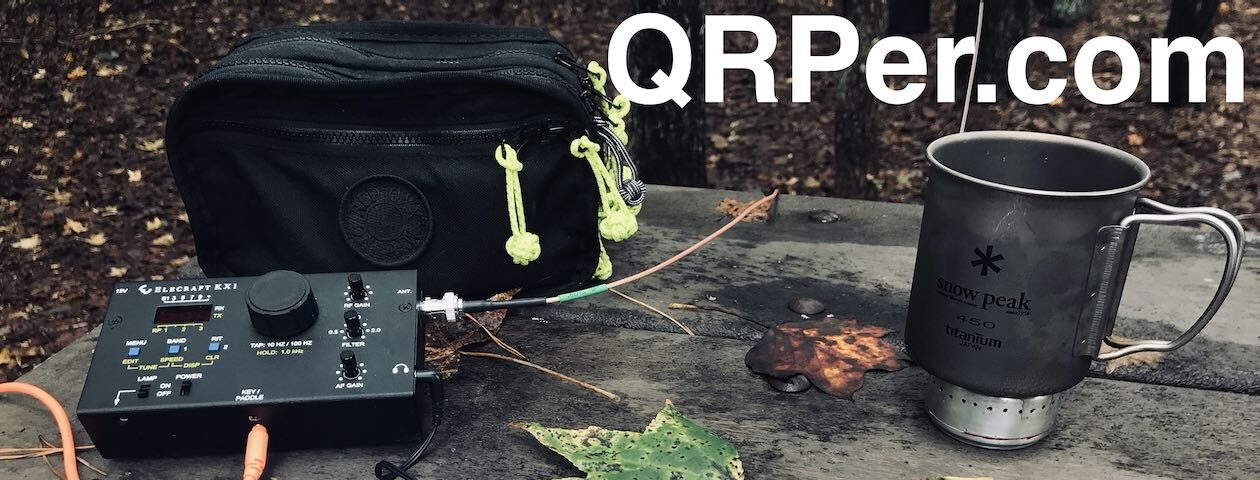 Yesterday, I posted some initial notes about the Elecraft KH1 and mentioned that I hoped to perform a POTA activation later in the day.
Yesterday, I posted some initial notes about the Elecraft KH1 and mentioned that I hoped to perform a POTA activation later in the day.
I’m pleased to report that I was able to fit in that activation!
I’m pushing this report and video to the front of the line because so many readers are eager to see how the KH1 performs during a field activation. Instead of focusing on the park, in this field report we’ll be taking a closer look at the KH1 and my initial impressions after performing a pedestrian mobile POTA activation with it.
Packing the KH1
 I had a very hectic schedule yesterday and was on the road in/around Asheville from 8:00AM to 2:00PM before an opportunity opened to fit in an activation.
I had a very hectic schedule yesterday and was on the road in/around Asheville from 8:00AM to 2:00PM before an opportunity opened to fit in an activation.
After a quick trip back to the QTH for lunch, I packed the Elecraft KH1 field kit in my EDC pack (a travel laptop bag).
Herein lies my first impression of the KH1: even though I knew I had packed the entire kit, I felt like I must have been leaving something behind.
Sounds funny, but even though I pride myself on making fully self-contained field radio kits, I felt like there must have be something else I needed. The KH1 field kit just seemed too small, too lightweight, and too compact to have included everything I needed for an activation.
Intellectually, I knew that it included everything needed, but I still did a mental inventory:
- Radio? Check.
- Antenna? Check.
- ATU? Check.
- Paddles? Check.
- Battery? Check.
- Counterpoise? Check.
- Log book and pencil? Check.
Hard to believe, but it was all there.
Trust me: the first time you take your KH1 to the field, I bet you’ll feel the same way I did.
Blue Ridge Parkway (K-3378)
 Because I was so short on time, I decided to activate the Blue Ridge Parkway which is the most convenient POTA entity when I travel into Asheville from Swannanoa.
Because I was so short on time, I decided to activate the Blue Ridge Parkway which is the most convenient POTA entity when I travel into Asheville from Swannanoa.
It was cold and blustery afternoon the afternoon of November 1, 2023. At my QTH, I checked the temperature and it was about 34F. I knew it would be a bit warmer in town which is a good 1,000 feet lower in elevation, but I still grabbed my gloves on the way out the door. Glad I did!
As I mention in the activation video below, I wasn’t exactly on my “A Game.” I had received a couple of vaccines the previous day and my body was a bit achy as if I was starting to get the flu. But, of course, I wasn’t. Still… I didn’t feel 100%.
I arrived on site and set up couldn’t have been easier:
- Open the KH1 pack
- Remove the KH1
- Attach the counterpoise and string out on ground
- Remove whip from clips and attach to top of KH1
- Extend whip
- Turn on radio
- Find a clear frequency
- Hit the ATU button for a 1:1 match!
We’re talking a 30 second process even for someone who moves slowly.
Important notes about my KH1
 Keep in mind the following notes that are relevant at time of posting this field report (November 2, 2023):
Keep in mind the following notes that are relevant at time of posting this field report (November 2, 2023):
- I am waiting on a firmware update to add:
- CW Message Memories
- CW Decoding
- Internal Logging
- I purchased the full “Edgewood” package but I don’t yet have my logging tray/cover yet. Elecraft plans to ship this within the next few days.
- My KH1 is a very early serial number because I’m in the volunteer testing group.
The KH1 Speaker

I consider the Elecraft KH1 speaker to be a “bonus” feature. The speaker is small (1.1 x 0.65”) and limited in fidelity.
I had planned to connect my Zoom digital recorder to the KH1 and record audio directly from the headphone port during this activation. Continue reading My First POTA Activation with the New Elecraft KH1 Handheld QRP Transceiver!






































